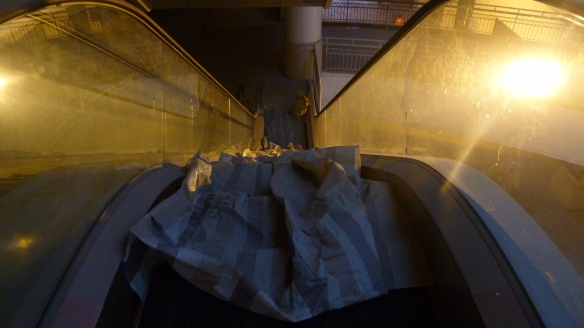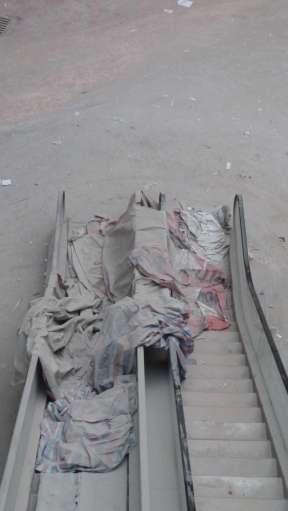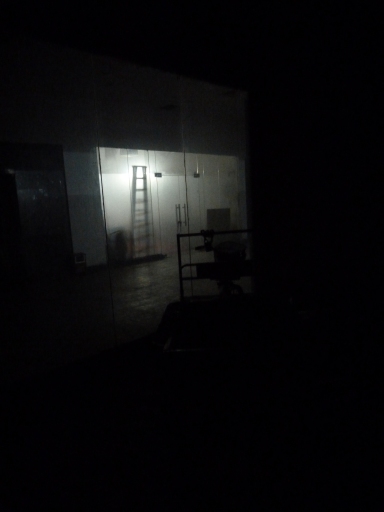Welcome to the second post in Photo Series 2: Understanding China. Ghost malls are cool. Let’s check ’em out.
Why I Went To This Mall
The summer of 2013, I spent 6 weeks to walk the 500-mile Colorado Trail. I wanted to do something similar in China but instead of walking constant nature, I wanted to walk through constant city. My 100-mile trip looked like this: http://goo.gl/maps/igrrm. Guangdong to Dongguan to Shenzhen to Hong Kong; 4 of the world’s 30 most populous cities (according to this metric). Unfortunately, I got quite sick at the beginning of the route and was only able to walk about 40 miles. Nevertheless, this trip allowed me to see strange attractions that I wouldn’t have seen “on-the -beaten-path”. One of my favorites was the New South China Mall — the world’s largest mall, mostly abandoned.
Paradox
It seems weird, right? The whole point of this walk was to be surrounded by dense urbanity, by people. And here was a massive abandoned mall? Those two don’t quite compute. Another strange aspect of this mall is that it has never been occupied: it’s been 99% vacant since 2005. The ramen noodle billionaire who funded it should’ve kept to noodles.
I arrived at the mall, ate some Pizza Hut until sunset, then went inside. I shouldn’t have explored at dusk. Hot damn it was creepy.

Essentially the first thing I saw when I walked in. Happiness graffitied out. Note beginning expanse of mall in the background.

When the lights were still on, they made for this space-like yellow-blue combination. All the escalators had tarps over them, possibly to protect against dirt?

The dirt/dust combo was everywhere. These flowers were beautiful once, before they were covered with a centimeter of minuscule debris.

I hadn’t seen a soul for the last 30 minutes. This car scared the living hell out of me when it drove up. It marks the transition of my time in the mall. A transition from dusk to night, from dusty to the terror of unintentionally uninhabited space.
Things Have Changed: This Mall is Indicative of China’s Growth
The situation that I have conveyed above is not entirely true, but rather what I had been told was true: Here exists the world’s largest mall, completely abandoned. My information primarily came from a New South China Mall Wikipedia article. Its most recent citation was from more than three years ago. In the last three years, there has been incredible residential growth in the area surrounding the mall, driving retail growth within the mall itself. When I arrived outside the mall, I saw thousands of people: families playing, security guards monitoring the parking lot, hostesses at the information desk. This wasn’t the post-apocalyptic wasteland I had wanted. Asking around, I learned that nearly 50% of the mall’s spaces were filled! I actually had to search to find the abandoned part. And when I took the elevator from a desolate ground floor up to the top floor, I found a karaoke bar! I asked the bartender why this high-class establishment was located on top of a creepy retail expanse. He responded, “Rent’s cheap.”
The transition of massive Chinese developments from “ghost” to occupied is a theme throughout China. 400 million Chinese have moved into cities in the last 30 years with another 400 million moving into urban areas the next 15. You can’t build houses, retail and public transport once they get there, you need to build it before. That’s why stupid projects like New South China Mall are only stupid on the surface. Before I went to China, I may have argued that the developer should’ve waited three years before beginning construction. But if he would have, who knows how much property and labor costs would’ve risen or whether another developer was eyeing the same opportunity. All that the developer knows is that people will come soon. In China, the classic Field of Dreams quote is reversed. It’s not: “If you build it, they will come.” Instead, “They will come regardless. Build it.”
Until Next Time
As always, hope you enjoyed this post as much as I enjoyed writing it. What a surreal experience, exploring a massive abandoned mall with only my camera flash. Similar to that scene from Saw actually.
Finally, the argument presented here is but one of the reasons for “ghost buildings” in China. Economics are confusing, especially in China where their state-sponsored system is unfamiliar to Americans like myself. One of the most interesting driving factors for mass construction is that investing in property is a great way for the rising middle-class to invest their money. When other outlets like the stock market are too volatile, buying a bunch of apartments around China and letting their value rise (see above) is a good way to beat inflation.
See you next week when I tell my next personal Chinese story.
RL









Not on your nelly would I have been able to walk around there! Am enjoying your observations and am learning to “see” differently from your photos. Thanks!
LikeLike
Thanks Christine! Learning to “see” differently is one of my main objectives for this blog. Glad it’s working!
LikeLike